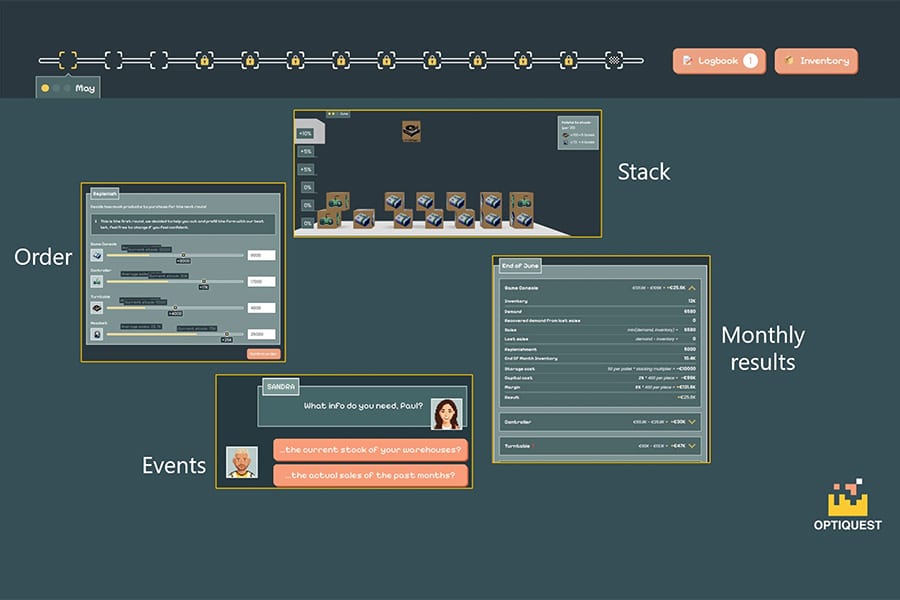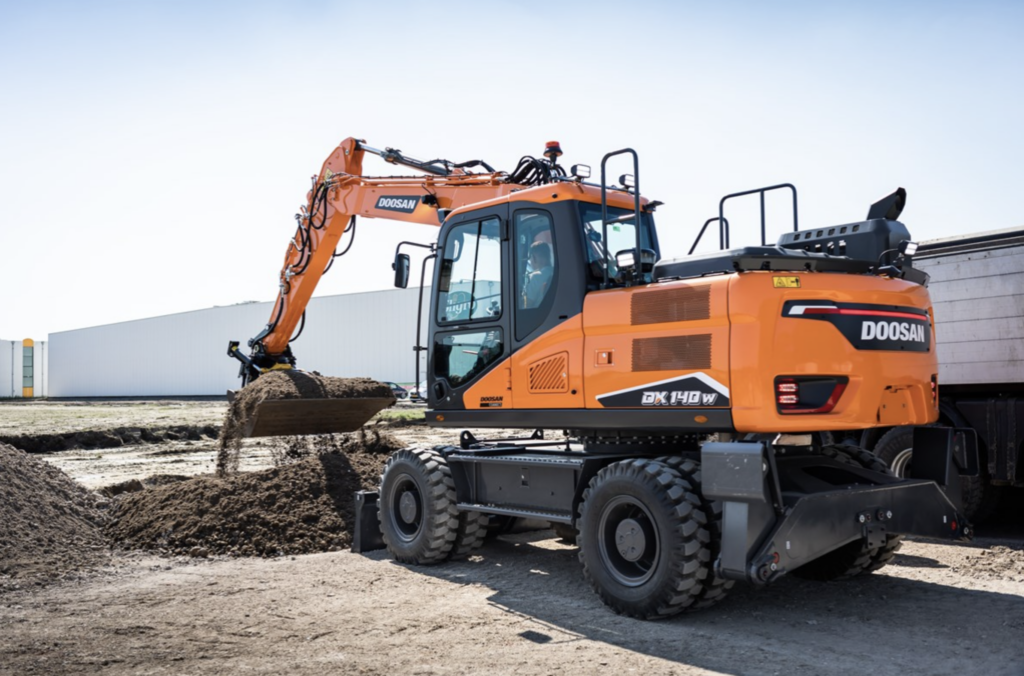
Doosan launches new generation DX140W-7 and DX160W-7 Stage V mobile excavators
The mobile excavators have new features such as operator assistance, improved operator comfort, larger toolboxes, new fuel economy features, more power, robustness and maneuverability.
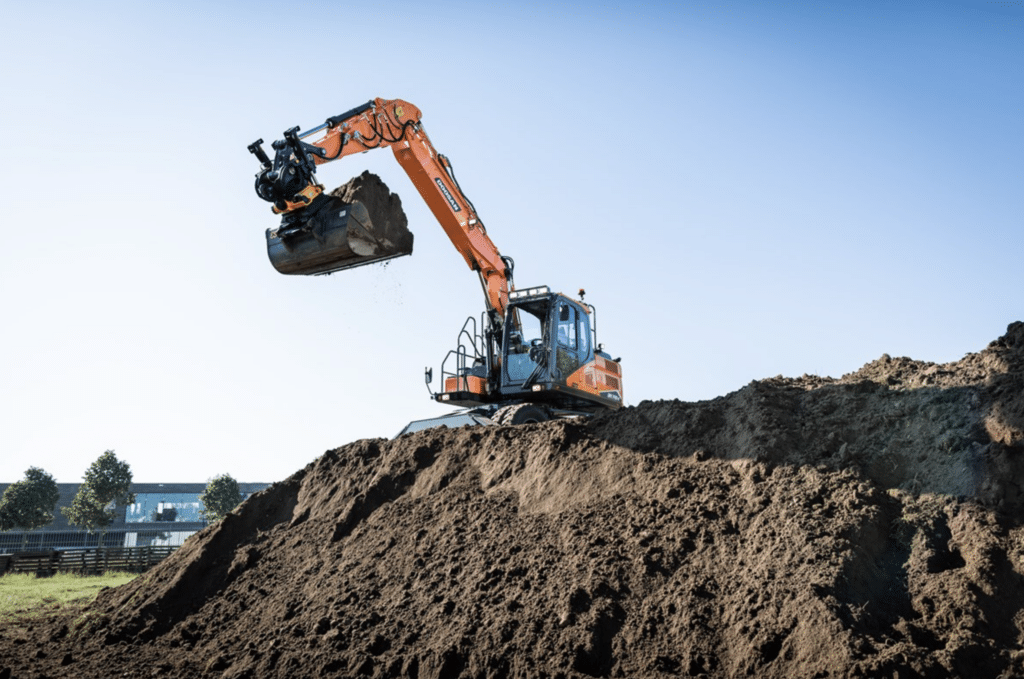
The state-of-the-art cab of the new -7 models excels in ergonomics, enhancing operator comfort and ease of operation. In addition to a new high-quality seat, the improved cab offers more features as standard than other machines on the market. This ensures excellent controllability and high precision in all applications.
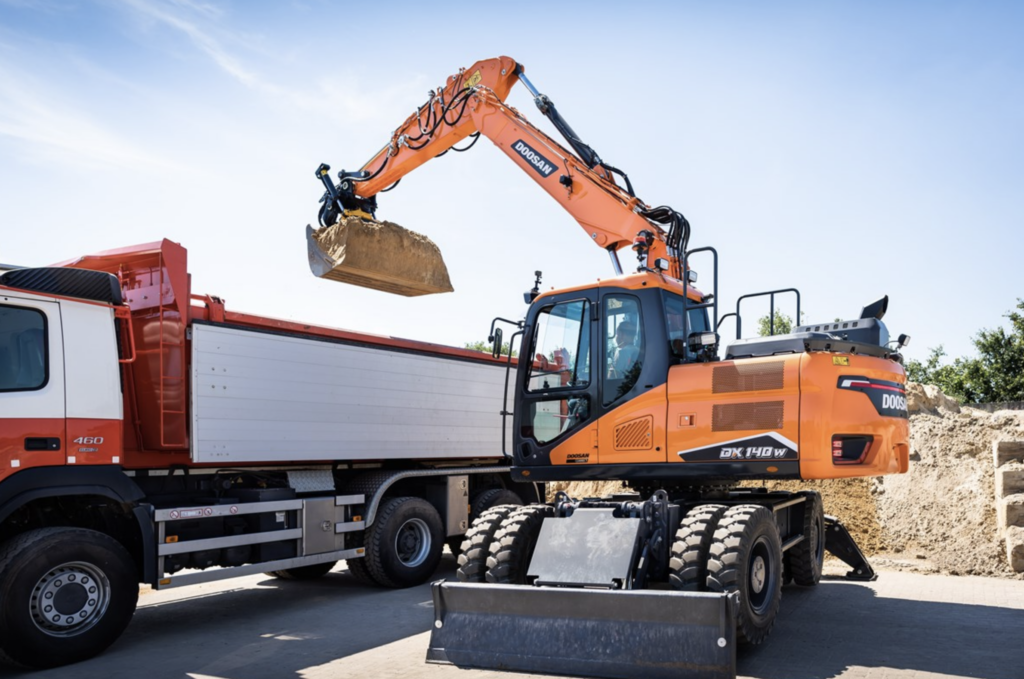
The new operator assistant functions
The Doosan DX140W-7 and the Doosan DX160W-7 mobile excavators have as standard the new automatic excavation cut-off function which holds the automatic service brake in position when the vehicle is completely stationary, without the operator having to apply the brake pedal. The operator can enable or disable this function by pressing the appropriate button. When the accelerator pedal is then pressed, the function is released again. Joystick control is also a new option that allows the operator to control the machine with the joystick thumb wheel, without requiring the operator to use the steering wheel while working and driving in work mode. This feature works only below the speed of 20 km/h in first or second gear. The function is activated or deactivated by pressing and holding the thumb wheel steering button on the control panel for at least one second. Last in this category, the load isolation system (LIS) is a new option that improves operator comfort by reducing the impact transmitted to the front of the machine when traveling off-road on uneven or rough terrain. The LIS feature is also activated by pressing the corresponding button on the control panel. It can be activated when the speed is between 5 km/h and 0.5 km/h and deactivated between speeds of 4 km/h and 0.5 km/h.
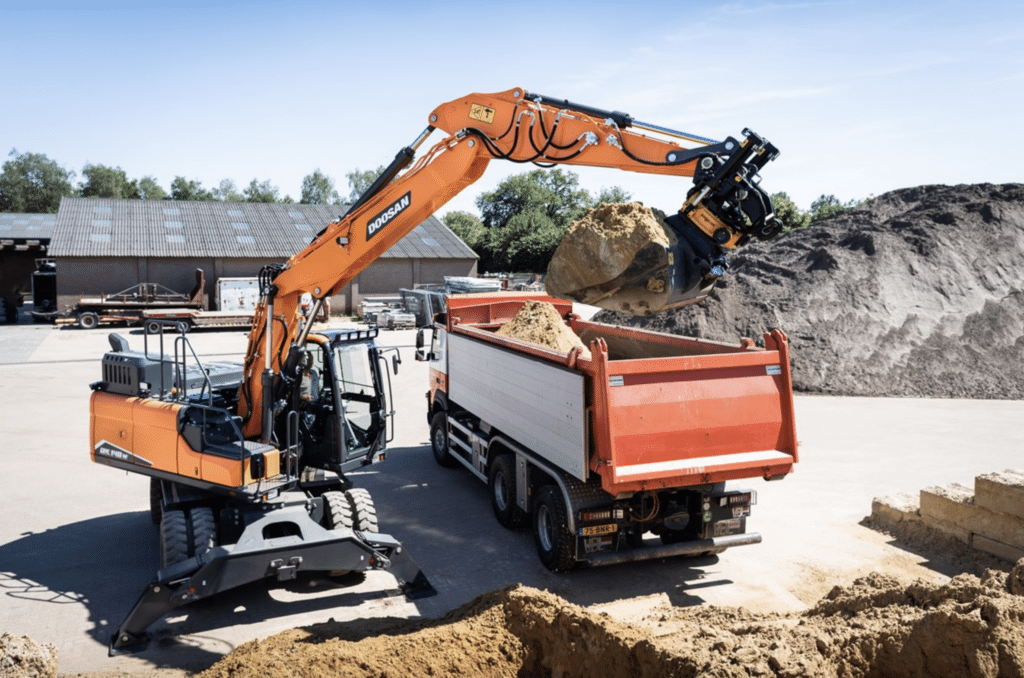
New tiltrotator mode
There is a new tiltrotator mode on the mobile excavator control panel, which can be selected to ensure optimized hydraulic flow and helps maximize the accuracy of tiltrotator operation by eliminating back pressure. This new mode is a dedicated two-way flow mode, but is managed by the EPOS as a unidirectional flow mode, with direct return to the tank in each direction. This eliminates back pressure and increases flow and controllability. The cab of the DX140W-7 and the DX160W-7 comes standard with a deluxe steering wheel with a chromed spoke and logo. The new design allows the operator to have better visibility. The steering column also has a new design with a telescoping function of 80 mm, which allows the operator to move the steering wheel closer to him to find his optimal position. There is also a tilt lever that allows a 15-degree tilt toward the operator to increase visibility over the top of the steering wheel, for example when digging trenches. So the narrower design of the steering column contributes greatly to improved visibility.

Other important new features in and around the cabin include:
- 8-inch Doosan smart Touchscreen, providing more information via a 30% larger screen
- DAB audio, which enables hands-free calling and bluetooth
- Keyless start through the Doosan Smart Key so you can lock and unlock the machine from a distance
- Renewed windshield wiper
- Renewed pedals
- Improved airflow for defrosting and air conditioning
- Central high-mounted stoplight CHMSL
- 9 LED work lights standard
- 4 additional LED work lights option
- Around view monitor, 360 degree cameras option
- Ultrasonic detection of obstacles option
Improved tool carrier capabilities
The Doosan DX140W-7 and the Doosan DX160W-7 offer improved front movement for rotary tools. As a result, the working range is also improved. In addition, the stroke of the articulating arm cylinder has been increased while the location of the cylinder remains the same. A lock valve has now been added on top of the boom cylinder to prevent unexpected release of the articulating arm cylinder when digging. Henceforth, the Doosan DX140W-7 comes standard with a heavier counterweight of 2.5 tons, for both the monog boom and other boom configurations. The Doosan DX160W-7 also comes standard with a 2.5-ton counterweight but it also has an optional 3-ton counterweight. This contributes to a higher lifting and digging capacity. To accommodate the heavier counterweights, the Doosan DX140W-7 is equipped with heavier ZF3060 axles, which are also used on the Doosan DX160W-7. On the DX140W-7, this provides a 30% higher maximum load. Compared to the standard chassis in the Doosan DX140W-7, the Doosan DX160W-7 has a heavy Duty chassis. Both the Doosan DX140W-7 and Doosan DX160W-7 have new upper structures that provide the space and durability for the new standard and optional heavier counterweights. By using bolted mounting, there is greater overhang on the rear/front undercarriage, providing even better stability. The mobile excavators come standard with a new lifting eye that is part of the casting for the push position and for the bucket attachment at the end of the arm. The new lifting eye has a maximum capacity of five tons and has a special bushing insert to prevent distortion of the lifting hole. To complement the increased stability of the mobile excavators, they have a new smart hydraulic system that offers an improvement of about 30% in attachments. The new system provides optimal distribution of hydraulic flow when both the arm and attachment are working simultaneously, with a new priority valve and an additional hydraulic line that maintains continuous hydraulic flow to the attachment even when the arm is in use.
New Stage V engine
To meet Stage V engine emission regulations, the new Doosan DX140W-7 and Doosan DX160W-7 mobile excavators are powered by the latest generation Doosan diesel engine the DL06, which delivers 102 kW (137 hp) at 2000 rpm. The DL06 engine offers a new solution to exceed Stage V regulations without exhaust gas recirculation (EGR), which increases the amount of air available during combustion, increases the temperature of the process and significantly reduces the amount of particle produced. This is combined with super efficient DOC/DPF+SCR after treatment technology to ensure minimal emissions. Thanks to the new technology, soot filter (DPF) maintenance is significantly reduced, with no maintenance required until the machine has run for 8,000 hours.
SPC3 smart power controllers
In the new Doosan mobile excavators, the improved fuel economy of the DL06 engine combined with a new hydraulic main valve and the new generation SPC3 smart power controllers provide greater fuel savings compared to the previous generation. Four power modes are now available that help make the new mobile excavators easier for the operator to control. The operator can set the power mode (P+, P, S or E) in either unidirectional or bidirectional mode. When driving the mobile excavators, the operator can select two-pump drive mode via the touch controls on the main panel. This reduces engine speed by about 300 rpm when engaged, resulting in 10% less fuel consumption while driving. The acceleration function has also been improved so that the operator feels a quicker response when pressing the accelerator pedal. When the two-pump stroke is disabled, it provides higher torque so you can drive better uphill, but in general, use of the one-pump stroke is recommended as long as the slope is not too extreme.
DoosanCONNECT Telematics System
The new mobile excavators are installed standard ex-factory with the state-of-the-art DoosanCONNECT telematics system. The system provides a web passed solution to manage the fleet, which is very useful to keep the machines properly monitored. But also to get the machines serviced on time. It is available as standard on all new Doosan excavators from 14 tons, all new Doosan wheel loaders and the dumpers.
